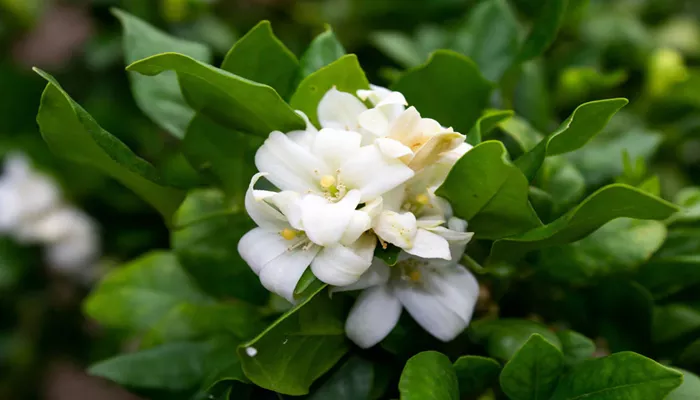Jasmine, with its delicate blooms and captivating fragrance, has long held a special place in gardens and hearts worldwide. Beyond its aesthetic appeal, this exquisite plant harbors a treasure trove of cool facts and intriguing characteristics that enrich our understanding of this botanical gem. From its cultural significance to its ecological role, jasmine continues to enthrall botanists, gardeners, and enthusiasts alike.
Unveiling the Mystique of Jasmine
Jasmine, belonging to the Oleaceae family, encompasses a diverse range of species known for their aromatic flowers. The genus includes both deciduous and evergreen varieties, each with its unique traits and adaptations. Originating primarily from Asia and Africa, jasmine has transcended continents to become a beloved ornamental and cultural symbol across the globe.
Aromatic Allure: The Science Behind Jasmine’s Scent
One of jasmine’s most enchanting features is its fragrance, which varies subtly among species. The scent, produced by volatile compounds in the flowers, serves as a natural attractant for pollinators like bees and butterflies. Beyond its biological function, jasmine’s aroma has found extensive use in perfumery and aromatherapy, where it is prized for its calming and uplifting effects on the human psyche.
Cultural Significance: Jasmine in My thology and Tradition
Throughout history, jasmine has been intertwined with mythology, folklore, and cultural traditions. In many Asian countries, jasmine symbolizes purity, love, and divinity. It holds a prominent place in religious ceremonies, weddings, and festivals, where garlands of jasmine flowers adorn temples and homes, imparting blessings and auspiciousness. Similarly, in Western cultures, jasmine has been associated with romance and sensuality, often featured in bridal bouquets and garden designs.
Ecological Role: Jasmine as a Habitat Provider
Beyond its aesthetic and cultural value, jasmine plays a crucial ecological role as a habitat provider. Its dense foliage provides shelter and nesting sites for birds and small mammals. Some jasmine species also attract beneficial insects, contributing to biodiversity and natural pest control in gardens. Understanding these ecological interactions underscores jasmine’s importance in sustainable gardening practices and ecosystem conservation efforts.
Horticultural Insights: Growing and Caring for Jasmine
For gardening enthusiasts, cultivating jasmine can be a rewarding endeavor. Whether as a sprawling vine or a compact shrub, jasmine offers versatility in garden design. Understanding its preferred growing conditions—such as well-drained soil, ample sunlight, and occasional pruning—ensures optimal growth and blooming. Moreover, exploring different propagation methods, from seeds to cuttings, empowers gardeners to propagate jasmine and share its beauty with others.
see also: What Is Special About Jasmine Flower?
Jasmine Varieties: Exploring Diversity in Bloom
Jasmine’s diversity extends to its numerous cultivars and species, each distinguished by flower color, size, and blooming season. From the classic white-flowered Jasminum officinale to the vibrant yellow blooms of Jasminum mesnyi, there’s a jasmine variety suited to every garden aesthetic and climate. Delving into these botanical variations enriches the gardening experience, offering new avenues for creativity and landscape enhancement.
Health and Wellness Benefits: Jasmine Beyond Beauty
Beyond its ornamental and olfactory appeal, jasmine offers potential health and wellness benefits. In traditional medicine, jasmine extracts have been used for their anti-inflammatory and antimicrobial properties. Moreover, jasmine tea, brewed from dried jasmine flowers, is celebrated for its soothing effects and antioxidant properties, promoting relaxation and digestive health. Integrating jasmine into holistic wellness routines underscores its multifaceted role in promoting overall well-being.
Conservation Challenges: Preserving Jasmine for Future Generations
Despite its cultural and ecological significance, jasmine faces conservation challenges in the wild due to habitat loss and unsustainable harvesting practices. Conservation efforts aimed at preserving native jasmine habitats and promoting sustainable cultivation practices are crucial for safeguarding this botanical treasure for future generations. By raising awareness and supporting conservation initiatives, gardeners and enthusiasts can contribute to the preservation of jasmine’s genetic diversity and ecological resilience.
Conclusion: Embracing Jasmine’s Timeless Appeal
In conclusion, jasmine stands as a testament to nature’s beauty and resilience, captivating hearts with its aromatic blooms and cultural symbolism. From ancient rituals to modern gardens, jasmine continues to inspire and enchant, bridging continents and cultures through its timeless allure. As we celebrate its cool facts and fascinating insights, let us cherish and protect jasmine, ensuring its legacy thrives for generations to come.
Through its aromatic allure, ecological contributions, and cultural significance, jasmine transcends mere botanical beauty to embody a profound connection between humanity and nature. As gardeners and stewards of the environment, we have the privilege and responsibility to nurture jasmine’s legacy, preserving its essence and ensuring its perennial presence in our gardens and hearts.
In essence, jasmine’s story is one of resilience, beauty, and cultural richness—an enduring tale that continues to unfold with each fragrant bloom.


